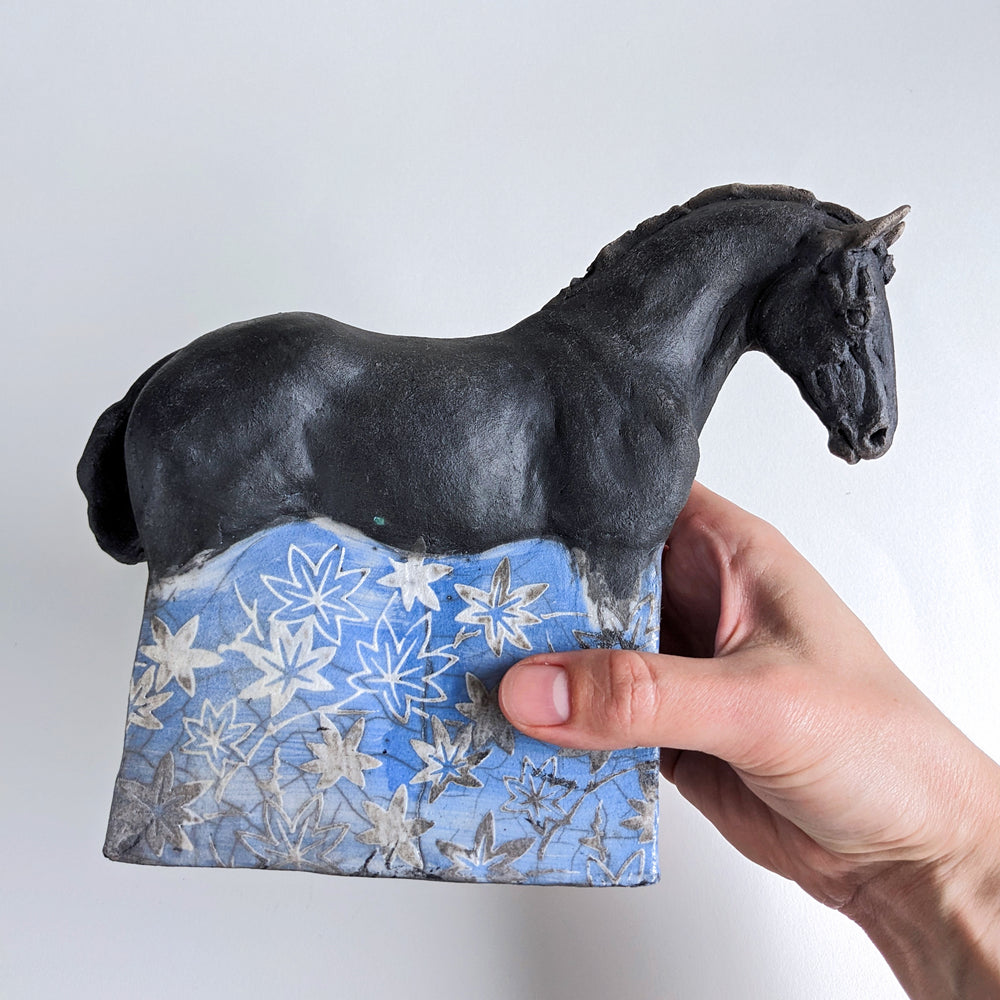
Embarking on the path of sculpture, especially as a beginner, can feel like navigating uncharted waters. The question of materials can be even more crucial when you’re sculpting from home. Home studios come with their unique set of challenges – from space limitations to ventilation concerns. In this blog post, we'll discuss key questions you need to ask yourself to navigate the complexities of selecting a medium that not only satisfies your artistic cravings, but also fits into the constraints and comforts of your home. Start by asking yourself three questions:
1. What type of art inspires you?
When starting in sculpture, a practical first step is identifying the art that moves you. Take a moment to think about the types of sculptures that you're drawn to. Is it a particular material, style, or the artist’s way of conveying concepts that attracts you? For example, you might love the look of bronze statues, but that doesn't mean you need to start with metalworking. Instead, consider what aspects of those bronze sculptures appeal to you. Is it the texture, the finish, or perhaps the subject matter? This understanding can help you choose a starting medium that's both feasible for a home studio and fulfilling to work with.
Sculptor’s Tip: Keep a sketchbook
The idea of maintaining a sketchbook might initially seem like an onerous task, especially if you remember it as a school assignment you grudgingly completed. I recall those days when I was compelled to fill at least 10 pages of a sketchbook every week. It felt more like a chore rather than an enriching activity, and I found myself doodling last-minute pictures just to meet the class requirement.
But the essence of this exercise occurred to me a few years later: A sketchbook is not meant to enhance your drawing skills. Rather, it's a repository of your creative thoughts, a private space to record, explore, and revisit ideas that might eventually translate into your art. Over time, I found myself jotting down lyrics, quotes, or pasting scraps of fabric that resonated with me. These seemingly disparate elements would often snowball into larger concepts that would inspire my art pieces years later.
Artists throughout history, from da Vinci to Christo, have embraced sketchbooks as invaluable tools in their creative journey. This tradition continues to hold strong because it enhances your art practice, providing an unexpected source of inspiration when needed.
Remember, a sketchbook doesn't need to be a fancy, leather-bound tome. Even a basic notebook would serve the purpose. Keep it handy and make a habit of noting down your thoughts and ideas. You'll be surprised at how these seemingly random musings can later serve as seeds for your art.
 An example of from one of my sketchbooks and how I work through ideas.
An example of from one of my sketchbooks and how I work through ideas.
2. Is there an art medium you have been wanting to use?
Your dream medium may not be practical given your current circumstances, but that doesn't mean it should stifle your creativity. I remember when I yearned to sculpt large ceramic horses, but my one-bedroom apartment would not accommodate such an endeavor. The questions surrounding the creation, firing, and storage of these massive pieces seemed insurmountable.
However, this challenge drove me to explore alternatives. After experimenting with various materials such as wire and paper mâché, I discovered that air dry clay was a feasible substitute for ceramics in my cramped living space. Although it wasn't my first choice, it still enabled me to express my creativity within my available resources.
Don't be disheartened if your desired medium doesn't lend itself to a home studio setup. Be open to non-traditional materials and techniques. Artists have used found objects (see Deborah Butterfield), cardboard (James Lake is a good example), torn paper (the early works of Anna-Wili Highfield), and a myriad of other unconventional materials to create stunning sculptures. The key is to continue creating, regardless of the restrictions. Don't wait for the perfect situation or the perfect medium - just start with what you have and let your creativity flow.
3. How much are you willing to invest?
As with any endeavour, your investment in your art will play a critical role in your creative journey. Sculpting can be an expensive pursuit, particularly when you're starting out and trying to find your footing. The materials can be pricey, and you may consume more materials early on as your skill and experience grow.
Don’t let the financial hurdle become a barrier. There are affordable alternatives and resources available if you’re willing to look for them. Can't afford air dry clay for large sculptures? Try papier mâché. Expensive pre-cut wood carving blocks breaking the bank? Check with local wood shops for off-cuts. Every problem has a solution if you're willing to think outside the box.
Remember, it's okay to experiment with different materials, even simultaneously. You might start with one medium and find that it doesn't suit your vision or your style. That's all right. You can always try something new, mix and match, or blend different materials to create your unique sculpting language. The only constant should be your love for creating.
Still searching for ideas? The next post might just spark the inspiration you've been looking for. Let's continue on this journey together.
What's Next?
Discover sculpture mediums for home-based artists

